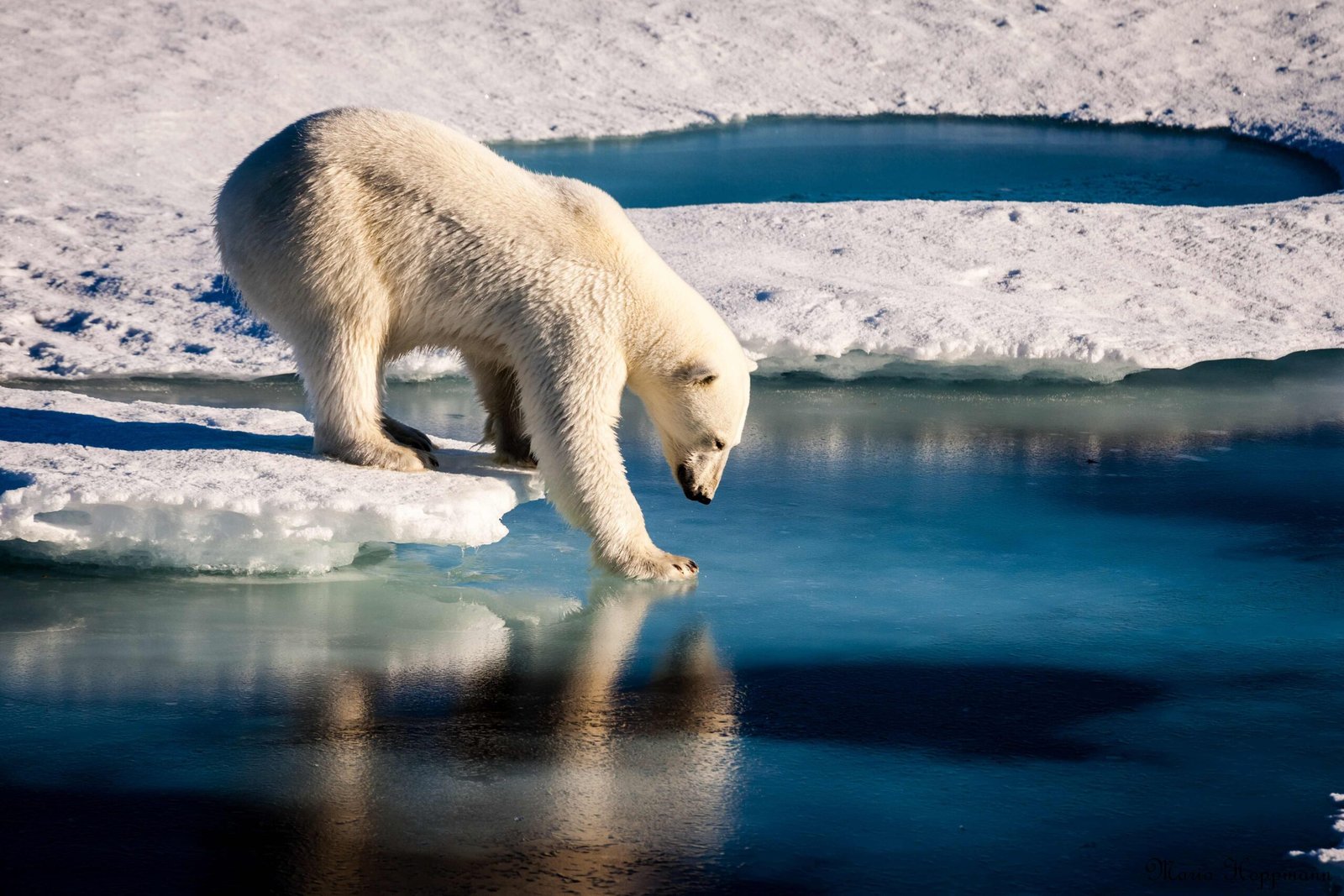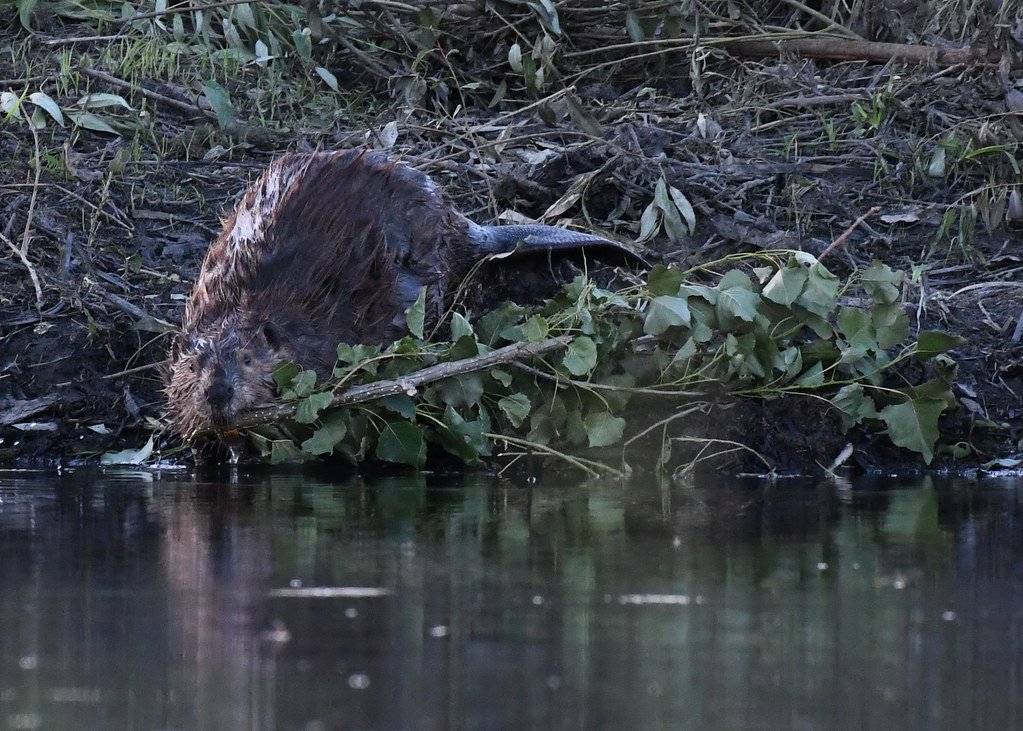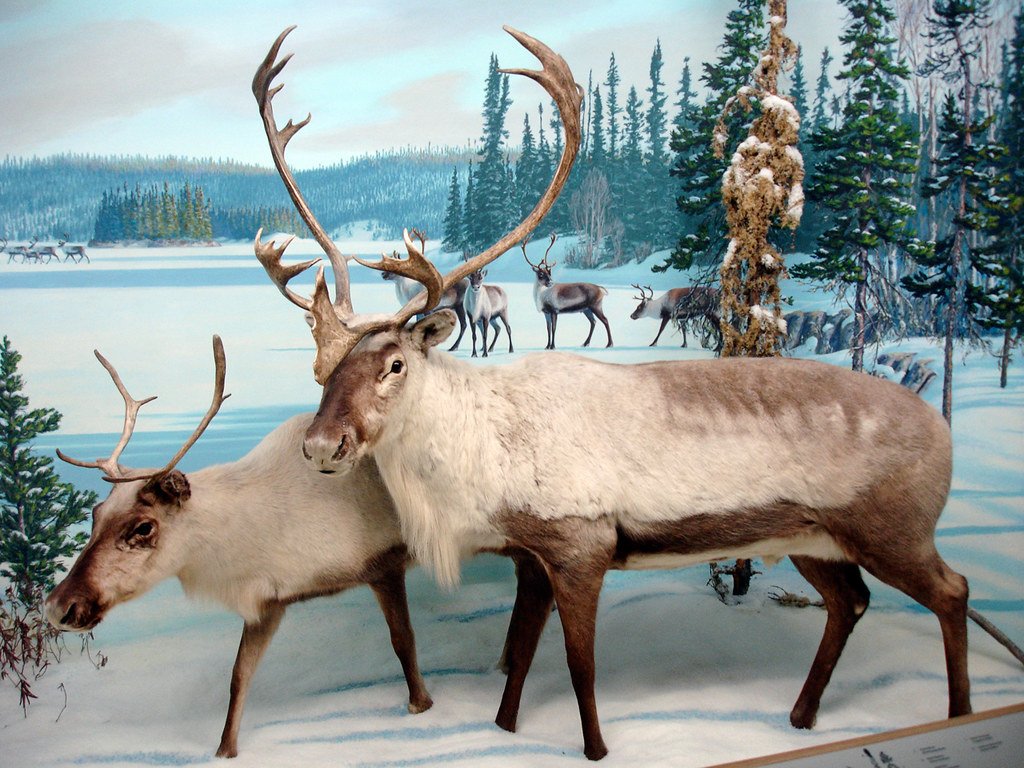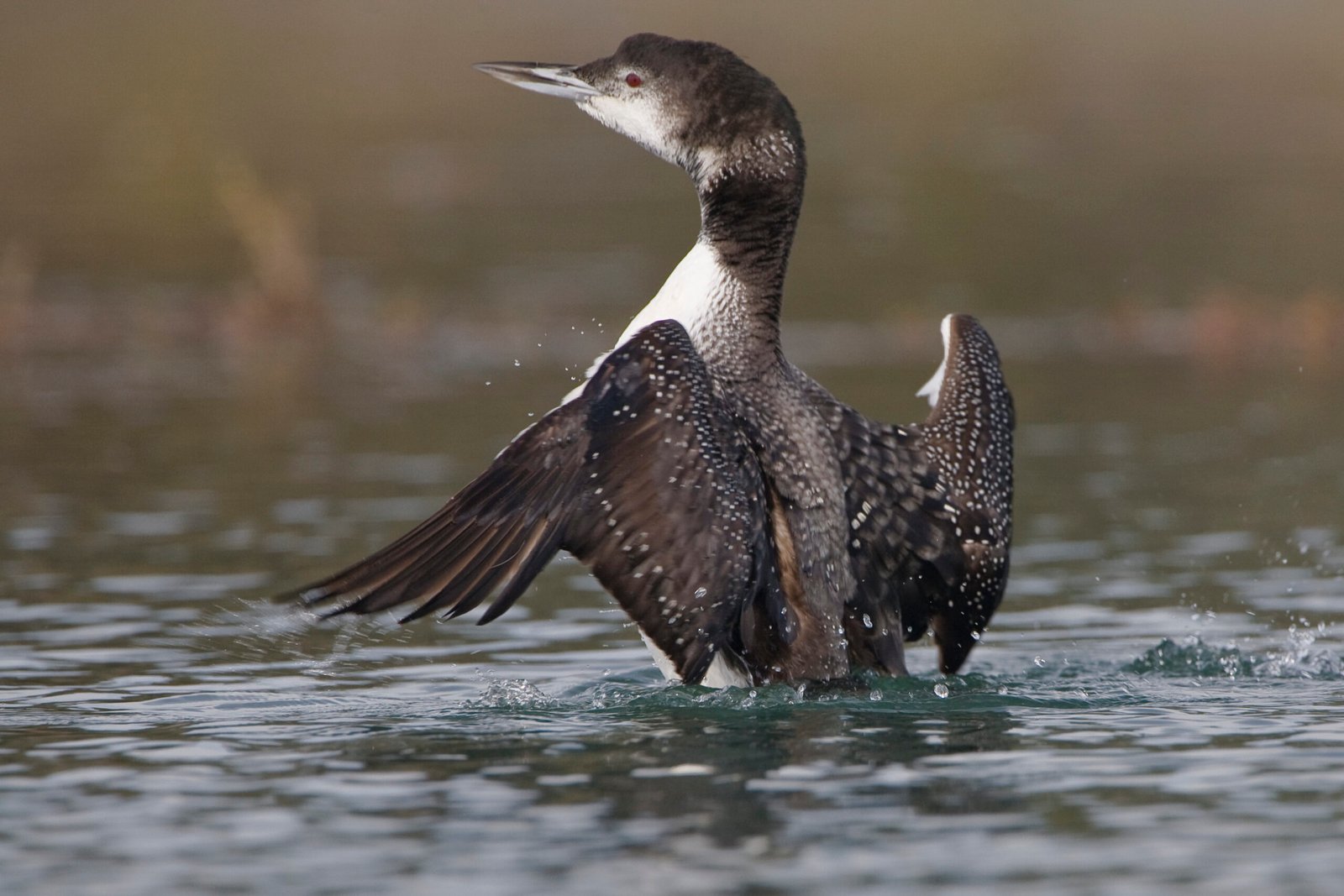Imagine standing at the edge of a pristine boreal forest, where ancient spruces tower overhead while the haunting call of a loon echoes across a mirror-like lake. This is Canada—a nation where wilderness isn’t just preserved in postcards, but lives and breathes through some of the most remarkable species on Earth. From the Arctic tundra to temperate rainforests, seven extraordinary animals have shaped Canada’s ecological identity in ways that will leave you speechless.
The Polar Bear: Arctic Icon Fighting for Survival

When most people think of Canada’s wildlife, the polar bear instantly comes to mind—and for good reason. These magnificent predators represent the raw power and fragility of the Arctic ecosystem like no other species.
Standing up to 10 feet tall on their hind legs, polar bears are the world’s largest land carnivores, perfectly adapted to life on the sea ice. Their black skin absorbs heat while their hollow, translucent fur provides incredible insulation. What’s truly shocking is that these apex predators can smell a seal from 20 miles away through three feet of ice.
Churchill, Manitoba has become the unofficial polar bear capital of the world, where hundreds of bears gather each fall waiting for Hudson Bay to freeze. However, climate change is dramatically shortening the sea ice season, forcing bears to fast longer and travel further for food. Some bears now fast for up to eight months of the year, surviving solely on stored body fat.
How Polar Bears Shape Arctic Marine Ecosystems

Polar bears aren’t just charismatic megafauna—they’re keystone species that regulate entire marine food webs. By hunting seals, they control populations that would otherwise overgraze fish stocks and disrupt the delicate balance of Arctic waters.
Their hunting behavior creates opportunities for Arctic foxes, ravens, and other scavengers who depend on leftover seal carcasses for survival during harsh winters. Without polar bears, the entire Arctic ecosystem would fundamentally change, affecting everything from plankton to whales.
The Grizzly Bear: Master of Mountain Wilderness

In the rugged mountains and vast forests of western Canada, no animal commands more respect than the grizzly bear. These incredible omnivores can weigh up to 800 pounds and run 35 miles per hour—faster than any human could ever dream of moving.
What makes grizzlies truly remarkable is their role as ecosystem engineers. During salmon runs in British Columbia and Alberta, a single bear can catch and consume up to 30 salmon per day, transferring massive amounts of marine nutrients into terrestrial ecosystems. The partially eaten fish they leave behind fertilize streamside vegetation, creating lush growth that supports countless other species.
Grizzlies also serve as nature’s gardeners, dispersing seeds across vast territories through their scat. Berry seeds can travel hundreds of miles in a bear’s digestive system, allowing plants to colonize new areas and maintain genetic diversity across landscapes.
Salmon Runs: The Grizzly’s Annual Feast

Nothing captures the raw drama of Canadian wilderness like watching grizzly bears fishing for salmon during spawning season. At places like Knight Inlet in British Columbia, dozens of bears gather at waterfalls where thousands of salmon leap upstream to spawn.
This annual spectacle represents one of nature’s most important nutrient transfers, moving ocean-derived nitrogen and phosphorus deep into forest ecosystems. Scientists have discovered that trees near salmon streams grow up to three times faster than those in other areas, thanks to bear-delivered marine nutrients.
The Canadian Lynx: Ghost of the Boreal Forest

With their oversized paws acting like natural snowshoes and piercing yellow eyes that seem to see through your soul, Canadian lynx are perfectly adapted predators of the northern wilderness. These elusive cats are so specialized that their entire existence revolves around hunting snowshoe hares.
The relationship between lynx and hares creates one of nature’s most famous population cycles, with both species rising and falling in roughly 10-year patterns. When hare populations crash, lynx numbers plummet shortly after, demonstrating how tightly connected predator and prey can be in northern ecosystems.
Lynx have incredible adaptations for their harsh environment, including fur-covered paws that distribute their weight over snow and exceptional hearing that can detect a mouse moving under two feet of powder. Their ear tufts aren’t just for show—they actually help funnel sound waves to improve their already superhuman hearing abilities.
The Lynx-Hare Cycle: Nature’s Boom and Bust

The population dynamics between Canadian lynx and snowshoe hares represent one of the most studied predator-prey relationships in ecology. Hudson’s Bay Company fur trading records dating back to the 1800s reveal this dramatic cycle with stunning consistency.
When hare populations peak at around 1,500 per square kilometer, lynx numbers soar to take advantage of the abundant prey. However, this abundance doesn’t last—hare populations crash due to predation pressure and food scarcity, followed by lynx populations two years later. This cycle influences everything from forest regeneration to the abundance of other small mammals throughout the boreal forest.
The Beaver: Canada’s Original Ecosystem Engineer

No animal has shaped Canada’s landscape more profoundly than the beaver, and their impact goes far beyond the iconic image on the nickel. These industrious rodents are nature’s ultimate ecosystem engineers, creating wetland habitats that support incredible biodiversity.
A single beaver family can build dams up to 1,000 feet long, transforming flowing streams into complex wetland systems. These engineered landscapes provide critical habitat for over 85 other species, including waterfowl, amphibians, fish, and countless invertebrates. The still water behind beaver dams also helps filter pollutants and reduce downstream flooding.
Beaver ponds act as massive carbon sinks, storing organic matter in anaerobic sediments for thousands of years. Some researchers estimate that beaver activities sequester as much carbon as entire forests, making these flat-tailed engineers unexpected allies in the fight against climate change.
How Beavers Create Biodiversity Hotspots

When beavers dam a stream, they don’t just create a pond—they create an entire ecosystem. The resulting wetlands become magnets for wildlife, supporting everything from moose browsing on aquatic plants to great blue herons stalking fish in the shallows.
These beaver-created wetlands also serve as nurseries for countless species. Wood ducks nest in the dead trees (called snags) that beavers inadvertently create by flooding forests, while muskrats, mink, and otters thrive in the rich aquatic environment. The complex habitat structure provides hiding places for prey species and hunting opportunities for predators, creating a web of life that wouldn’t exist without beaver engineering.
The Caribou: Nomads of the Northern Frontier

Across Canada’s vast tundra and boreal forests, few sights are more breathtaking than thousands of caribou moving in their ancient migration patterns. These hardy ungulates undertake some of the longest land migrations on Earth, with some herds traveling over 3,000 miles annually.
Caribou are uniquely adapted to survive in harsh northern climates, with hollow hairs that provide insulation and hooves that act like built-in ice picks for navigating frozen terrain. Their ability to digest lichens—plants that most other animals can’t process—allows them to survive in environments where other large mammals would starve.
The Porcupine Caribou Herd, which migrates between Alaska and Yukon, represents one of the last great wildlife spectacles in North America. However, climate change is disrupting traditional migration routes as changing weather patterns create ice barriers and alter the timing of seasonal movements.
Migration Patterns That Shape Entire Landscapes

Caribou migrations create pathways of nutrient distribution across the Arctic, as these animals transport nitrogen and phosphorus from winter ranges to summer calving grounds. Their hoofprints and grazing patterns influence vegetation growth and soil development across thousands of square miles.
The timing of caribou migrations has been synchronized with Arctic seasons for millennia, but rapid climate change is throwing this delicate balance into chaos. Earlier spring melts create dangerous river crossings, while changing precipitation patterns affect the quality of winter forage lichens.
The Orca: Apex Predator of Pacific Waters

In the cold, nutrient-rich waters off British Columbia’s coast, killer whales reign supreme as the ocean’s most intelligent and adaptable predators. These remarkable marine mammals demonstrate cultural behaviors that rival those of great apes, with different populations developing unique hunting techniques and communication patterns.
The Southern Resident killer whales, found in the Salish Sea between British Columbia and Washington State, represent one of the most endangered marine mammal populations in North American waters. With only around 75 individuals remaining, this population faces threats from declining salmon stocks, vessel noise, and chemical pollutants.
What makes orcas truly fascinating is their complex social structure and cultural transmission of knowledge. Matriarchal pods pass down hunting techniques, migration routes, and even dialects through generations, creating distinct cultural groups that behaviorists consider separate societies.
Orca Intelligence and Cultural Behaviors

Killer whales possess the second-largest brains of any marine mammal, and their intelligence shows in remarkable ways. Different orca populations have developed specialized hunting strategies, from cooperative wave-washing techniques to strand-feeding behaviors that mothers teach their calves through patient demonstration.
The acoustic complexity of orca communication rivals that of human language, with each pod having its own dialect that members learn from birth. Scientists have documented over 60 different call types, and recent research suggests that orcas may even have names for individual family members.
The Common Loon: Voice of the Wilderness

No sound captures the essence of Canadian wilderness like the haunting call of a common loon echoing across a pristine lake. These ancient-looking birds serve as indicators of aquatic ecosystem health, requiring clean, fish-rich waters to survive and reproduce successfully.
Loons are perfectly adapted for underwater hunting, with solid bones that help them dive up to 200 feet deep and eyes that can adjust focus both above and below water. Their distinctive calls serve multiple purposes—from territorial announcements to family communication—and can be heard up to five miles away on calm nights.
As top predators in aquatic food webs, loons consume large quantities of fish, helping maintain balanced populations in lake ecosystems. Their presence indicates healthy water chemistry and abundant fish populations, making them valuable indicators of environmental quality.
Loon Conservation and Habitat Protection

Common loons face numerous challenges in modern Canada, from habitat loss due to shoreline development to lead poisoning from fishing tackle. These birds require specific nesting conditions—shallow, protected bays with adequate fish populations and minimal human disturbance.
Climate change poses additional threats as changing precipitation patterns affect water levels and fish populations in northern lakes. Warmer temperatures also favor the growth of invasive aquatic plants that can interfere with loon feeding and nesting behaviors.
Predator-Prey Relationships That Define Ecosystems

The seven species that define Canada’s ecosystems don’t exist in isolation—they’re connected through complex webs of predator-prey relationships that maintain ecological balance. Polar bears depend on seals, lynx specialize in hunting snowshoe hares, and orcas require abundant salmon runs to feed their pods.
These relationships create fascinating evolutionary arms races, where prey species develop better escape mechanisms while predators evolve more effective hunting strategies. The result is a dynamic equilibrium that has shaped Canadian ecosystems for thousands of years.
Climate Change Impacts on Canada’s Iconic Species

Every one of Canada’s defining species faces unprecedented challenges from rapidly changing climate conditions. Arctic sea ice loss threatens polar bears, while warming temperatures disrupt the delicate timing of caribou migrations and the predator-prey cycles that lynx depend upon.
Rising ocean temperatures and acidification affect the entire marine food web that supports orcas, while changing precipitation patterns alter the aquatic ecosystems where loons nest and feed. Even beavers face challenges as extreme weather events destroy their carefully engineered dams and wetland systems.
Conservation Success Stories and Ongoing Challenges

Despite mounting pressures, Canada has achieved remarkable conservation successes with several of these iconic species. Beaver populations have recovered dramatically from near-extinction during the fur trade era, while some grizzly bear populations have stabilized through careful management and habitat protection.
However, significant challenges remain, particularly for species like polar bears and Southern Resident orcas that face threats beyond Canada’s borders. International cooperation and comprehensive ecosystem management approaches will be essential for protecting these species and the ecosystems they define.
The Interconnected Web of Canadian Wilderness

Understanding Canada’s defining species means recognizing how deeply interconnected these ecosystems truly are. Salmon runs support not only grizzly bears and orcas, but also the forest ecosystems where lynx hunt and the wetlands where beavers engineer their aquatic landscapes.
These connections extend across vast distances—nutrients from Pacific salmon spawning grounds eventually reach Arctic waters through river systems, while caribou migrations link boreal forests to tundra ecosystems where polar bears hunt. The health of one system inevitably affects the others, creating a continental-scale web of ecological relationships.
Future Outlook for Canada’s Defining Species

The future of Canada’s iconic species depends largely on how successfully the nation addresses climate change, habitat protection, and ecosystem management. Some species like beavers and loons show remarkable adaptability, while others like polar bears face uncertain futures in rapidly changing environments.
Emerging conservation strategies focus on protecting large, connected landscapes that allow species to adapt to changing conditions. Indigenous knowledge and traditional ecological practices are increasingly recognized as essential components of effective conservation planning, offering insights gained through thousands of years of coexistence with these remarkable animals.
Canada’s seven defining species represent far more than charismatic wildlife—they’re the living threads that weave together the nation’s diverse ecosystems. From the Arctic ice where polar bears hunt to the Pacific waters where orcas communicate in complex dialects, these animals embody the wild heart of a nation. Their survival depends not just on protected areas and conservation laws, but on our understanding that healthy ecosystems and thriving human communities are inseparable. As these species face unprecedented challenges from climate change and habitat loss, their fate ultimately reflects our own relationship with the natural world. Will future generations experience the spine-tingling call of a loon across a pristine lake, or will these sounds become mere memories recorded in digital archives?




